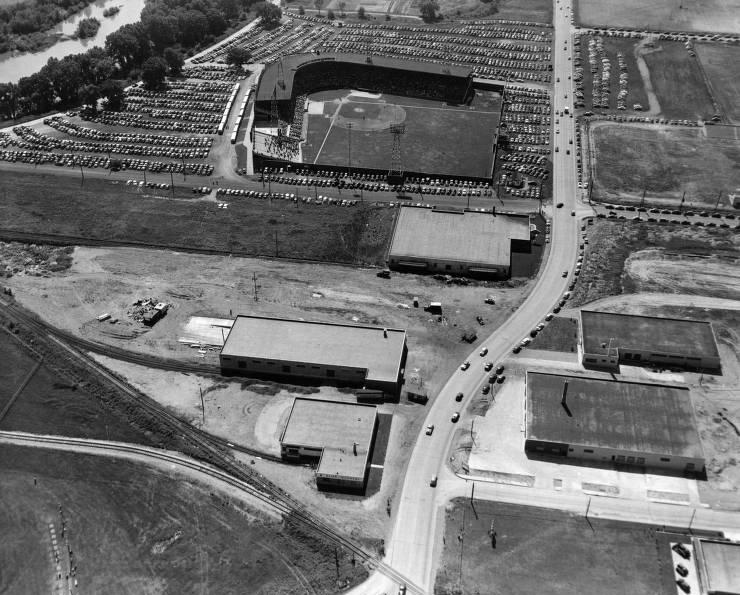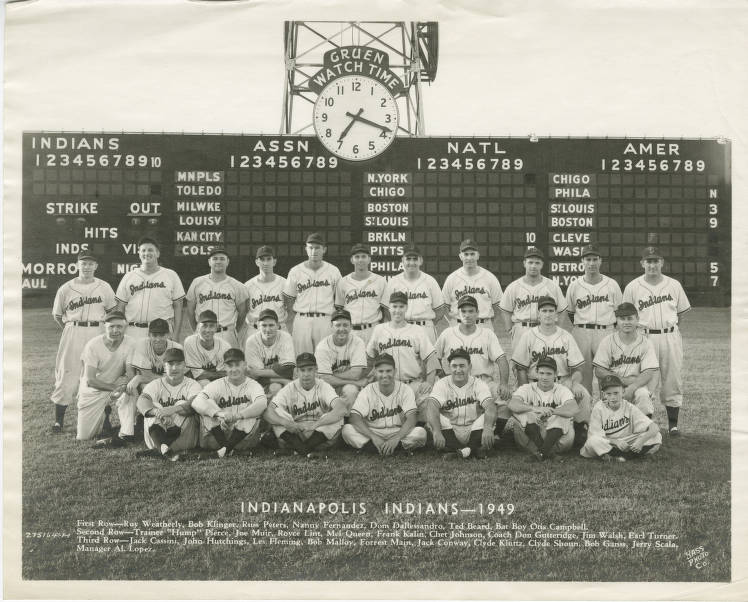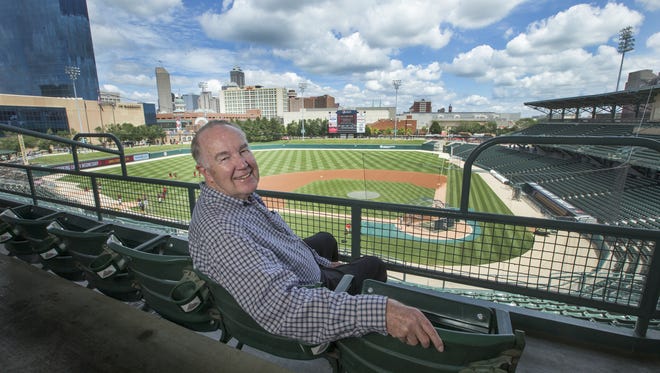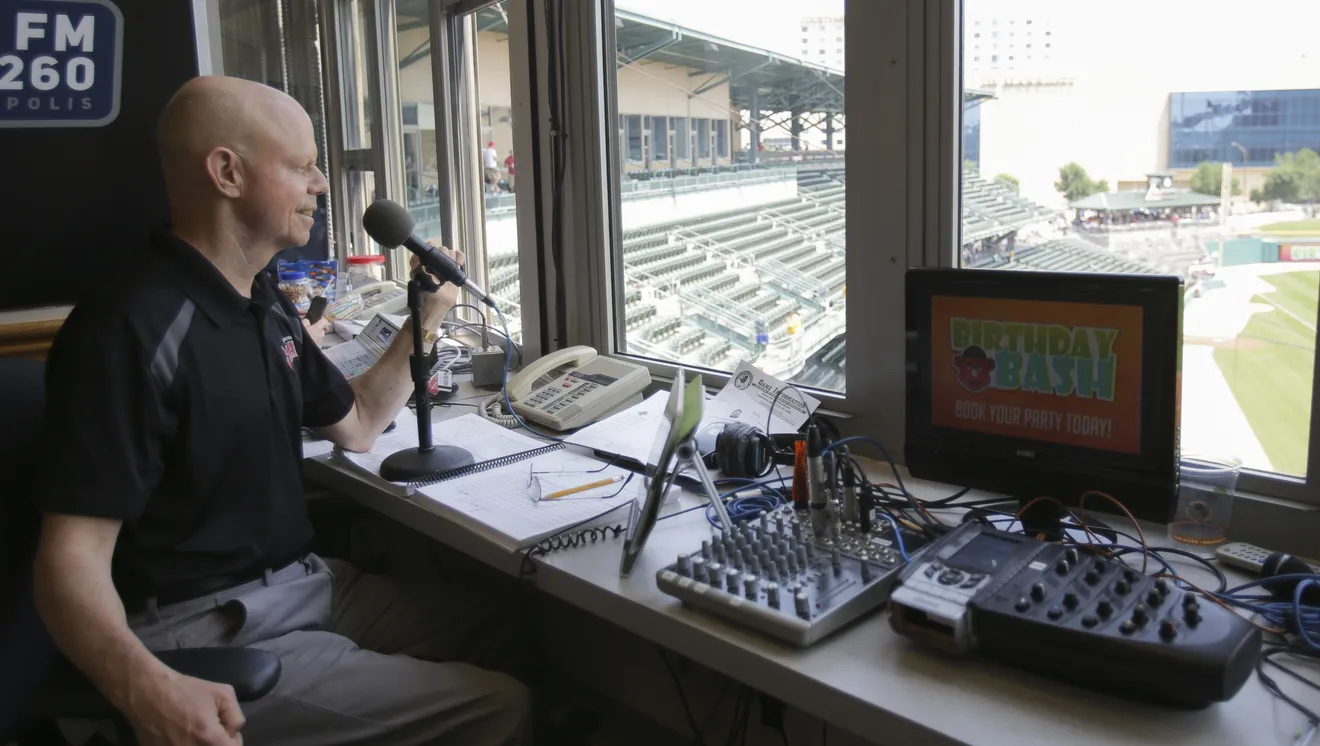A charter member of the American Association (AA) since its inaugural season of 1902, the Indianapolis Indians club has provided over a century of professional minor league baseball in central Indiana. The team played its first game at in spring 1902 under the leadership of team owner William H. Watkins and captured its first AA title flag that fall. The Indians played at the ball field at 3001 East Washington Street through 1904. In April 1905, the Indians moved to a new larger stadium, also named Washington Park, which opened in the 1200 block of West Washington Street.

Indianapolis native helped the Indians win the American Association pennant again in 1908 before becoming the primary shortstop for the Detroit Tigers from 1909 to 1923. Another early franchise highlight included a 1917 Junior World Series sweep over the reigning International League champion Toronto Maple Leafs. Bush left the Detroit Tigers and served as manager of the Indians between 1924 and 1926. The franchise won another league pennant in 1928. Norman Perry, owner of Indianapolis Power and Light, took over ownership of the team in 1929.
The Indians moved again to the near-downtown ballpark on West 16th Street, in 1931. The stadium served the club from 1931 until the late 1990s, first under the name of Perry Stadium (honoring Perry’s brother, James Perry). In 1941, Perry sold the Indians to former manager Bush and , president of the Fidelity Trust Company. McKinney and Bush promised a complete overhaul of baseball operations, and part of their plan was to rename Perry Stadium. In 1942, the Indians played their home opener in the rechristened Victory Field. It remained known as Victory Field until 1967 when it was renamed .

Indianapolis launched its major league affiliations during the 1939-1941 seasons with a working agreement between Indianapolis and the National League’s Cincinnati Reds. Indianapolis also served as a farm team for the Boston Braves (1946-1947) and Pittsburgh Pirates (1948-1951). In 1948, the Indians were an American Association ballclub that topped 100 victories.
Between 1952 and 1956, the Indianapolis franchise allied with the Cleveland Indians. This affiliation lent the team its first cluster of future big-league stars, as Cleveland pitching prospect Herb Score won 22 games while Rocco Colavito cracked a club record with 38 homers in 1954. The 1952-1956 campaigns brought two American Association titles to Indianapolis, as did the power-packed 1954 ballclub under manager Kerby Farrell, considered by many baseball historians the finest minor league team in the nation during that decade.
In 1955 the Cleveland Indians had owned the Indianapolis team franchise. The team ended the season with $150,000 in debts. Cleveland contemplated ending its Triple-A affiliation with the Indians, which meant the team would move to another city. To keep the team in Indianapolis local civic leaders made stock in the team available to the public. Indianapolis Indians stock generated $205,000 in capital, making the fans the new owners of the team by the start of the 1956 season. Under this new local ownership, the Indians also gained a second Junior World Series triumph against the International League Rochester Red Wings in 1956.
Additional major league working agreements included the American League Chicago White Sox (1957-1959, 1962- 1967). The Indians won their last American Association pennant under the White Sox in 1962. The team also partnered with the National League Philadelphia Phillies (1960), as well as once again with the Cincinnati Reds (1961, 1968-1983).
Max Schumacher joined the Indianapolis Indians front office in January 1957. Part of Schumacher’s early success stemmed from his ability to sell tickets, generate advertising dollars, and keep expenses down by having only three or four full-time employees and enough seasonal employees to work during the actual baseball season.
A second financial crisis arose when the cash-short American Association temporarily folded after the 1962 season. The team was suddenly forced to ally with the International League for a single season, winning the pennant in its initial campaign. It then affiliated with the less proximate Pacific Coast League for five additional summers (1964-1968). Reformation of the American Association in 1969 renewed Indianapolis’ membership in America’s second-oldest minor league circuit. The 16-year Cincinnati affiliation ended acrimoniously after the 1983 season when Indianapolis’ front office under long-time general manager Schumacher lost patience with the parent club’s steadfast policy banning the use of the designated hitter at the minor league level.
In addition to in-person viewership, the late 20th century also saw Howard Kellman join the squad’s radio broadcast team in 1974. Kellman has broadcast the team’s games since then and has been dubbed the “Voice of the Tribe.”
By the time Schumacher was named chairman of the Indians in 1986 minor league baseball had undergone a sea change from the days when teams could be locally owned and operated with monies generated from gate receipts. Under his direction, the Indians had one of its most dominant runs resulting from the working agreement between the team and the National League Montreal franchise, bringing about four consecutive American Association playoff championships (1986-1989) and two victories in the Triple-A Alliance World Series (which is contested between the various minor leagues). Schumacher developed close relationships with the owners of the various major league teams the Indians were affiliated with which proved critical to passing talented players to the MLB.
Bush Stadium was one of America’s last remaining minor league architectural treasures from an earlier age of intimate steel-and-concrete urban ballyards. It gained national attention in 1987 when selected as the setting for filming the movie Eight Men Out, based on the 1919 Black Sox World Series scandal. It also drew wide international notice in 1987 as the host site for the baseball tournament. A year later it served as the setting for an inaugural two games of the first-ever Triple-A Alliance championship series between the International League Rochester Red Wings and host American Association Indianapolis. Under Schumacher’s leadership the Indians pushed for a new stadium with many mayors, a concept mayor finally latched on to in 1992. Over six decades with the team Schumacher built Indianapolis into a model Triple-A franchise.

Following a decade-long association with Montreal, the Cincinnati affiliation was reestablished in 1993. This affiliation lasted until 1998. Renewal of the team’s affiliation with the Reds brought further success to the capital when the team won the American Association Championship in 1994 and made its second appearance in the title matchup in 1996. In addition, second baseman Eric Owens won the American Association MVP in 1995.
In 1993 Major League Baseball advised the team’s management that Bush Stadium required thorough refurbishment or replacement in order to meet contemporary standards. In spring of 1994, the city’s Capital Improvement Board approved financing for Indianapolis’ plan to build a downtown stadium just west of the Hoosier Dome in a portion of White River State Park. The new stadium opened in 1996 and was named Victory Field for both the United States’ victory in WWII and in memory of Bush Stadium’s former name. Considered one of the best minor league venues, Victory Field has been the team’s home ever since.

The consolidation of the Triple-A leagues led to the dissolution of the American Association, precipitating Indianapolis’ permanent move to the International League in 1998. Here the team found success when Roberto Petagine was named the International League MVP in 1998 while playing first base and outfield. The Indians partnered with Milwaukee Brewers in 2000. They won the Triple-A World Series that same year. In 2005, the team agreed to an affiliation with the Pittsburgh Pirates. Ben Hendrickson and Zach Duke were named the International League’s Most Valuable Pitchers in 2004 and 2005, respectively. Furthermore, the team made three International League Championship appearances in 2000, 2005, and 2015.
Playing in a variety of leagues in addition to the venerable American Association, the Indianapolis club has enjoyed over 20 league or divisional titles and provided training grounds for several future major league stars (Roger Maris, Herb Score, Rocco Colavito, Eric Davis, Jose Bautista, Andrew McCutchen) and a handful of future Hall-of-Famers (Grover Cleveland Alexander, Al Lopez, Harmon Killebrew, Rube Marquard).

In 2020, in the wake of widespread national criticism of using Native American identities and epithets as team names, the team announced they would pursue a change in their team mascot. However, in 2023 the team announced it would keep its name while partnering with the Miami Nation of Indians of Indiana. The partnership provides for a land acknowledgment, recognition of Miami veterans, support of a Miami scholarship program, and fan education opportunities.

Help improve this entry
Contribute information, offer corrections, suggest images.
You can also recommend new entries related to this topic.